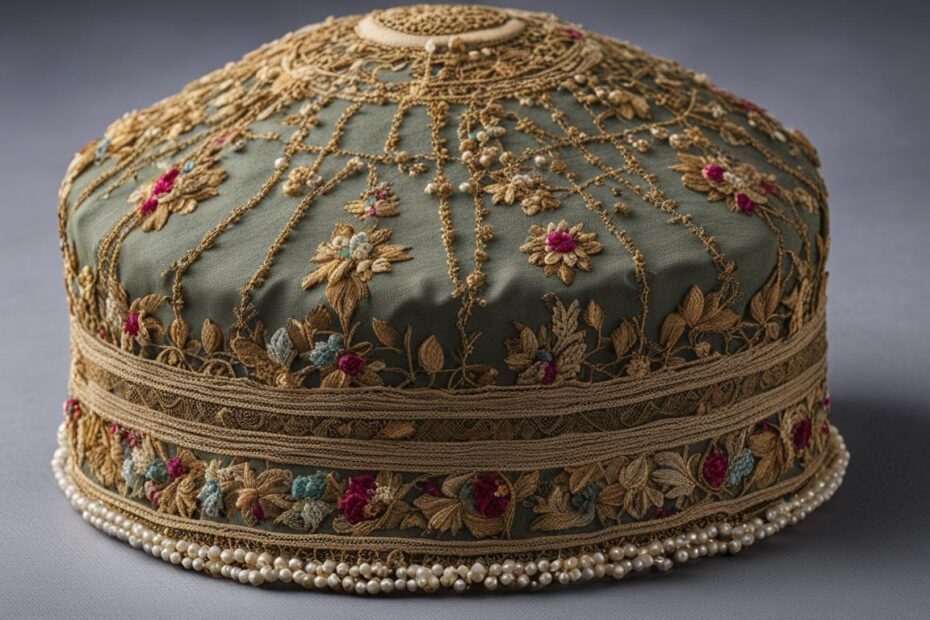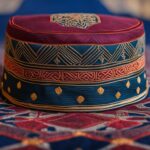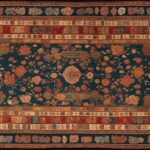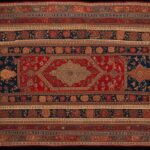Discover the fascinating history behind the prayer cap, also known as taqiyah or topi. This traditional cap, worn by Muslim men, encompasses a rich cultural and religious heritage that spans centuries. From its origins in the city of Kufa in Iraq to its significance in modern times, the prayer cap holds a special place in the hearts of believers.
Key Takeaways:
- Explore the origins of the prayer cap, tracing its roots back to the time of the Islamic prophet Muhammad.
- Understand the cultural importance of the prayer cap and its role as a symbol of respect and religious devotion.
- Learn about the significance of wearing a prayer cap in the context of Islam and its connection to modesty and humility.
- Discover the evolution of prayer caps throughout history, adapting to different styles, designs, and regional influences.
- Appreciate the global influence of the prayer cap and its representation of diversity, unity, and shared values within the Muslim community.
Origins of the Prayer Cap
The prayer cap, also known as a taqiyah or topi, has a fascinating history that stretches back to the time of the Islamic prophet Muhammad. It is believed that Muhammad himself wore a type of prayer cap called a kufi. Over the centuries, the prayer cap evolved and gained popularity among Muslim men, spreading across various regions such as North Africa, East Africa, West Africa, South Asia, and the Middle East. As the cap reached different cultures, it incorporated their influences and developed into various styles and designs.
“The prayer cap is a testament to the rich historical development of Islamic attire, adapting to cultural influences while maintaining its core significance.”
The historical development of prayer caps reflects the diverse cultural tapestry of the Muslim world. From simple and plain designs to intricately embroidered caps, each style carries its own unique meaning. Let’s take a closer look at the origins and significance of some of these prayer cap styles:
Kufi
The kufi is perhaps the most widely recognized and traditional style of prayer cap. It is a close-fitting cap that sits snugly on the head. The name “kufi” is derived from the city of Kufa in Iraq, where the cap is believed to have originated. The kufi is often made from fabric or crocheted material and is known for its simplicity and elegance.
Keffiyeh
The keffiyeh, also known as a shemagh, is a square-shaped cloth that is traditionally worn as a head covering in the Middle East. It can be wrapped around the head in various ways, and its distinctive checkered pattern adds a touch of cultural identity. While not exclusively a prayer cap, the keffiyeh is sometimes used for prayers by Muslim men in the region.
Topi
The topi is a prayer cap style commonly worn in South Asia, particularly in countries like India, Pakistan, and Bangladesh. It is typically made of fabric and often features colorful embroidery and embellishments. The topi is an integral part of regional traditional attire, representing cultural heritage and religious devotion.
These are just a few examples of the prayer cap styles that have emerged throughout history. Each style carries its own historical significance and cultural symbolism, representing the diversity and unity within the Muslim community. The prayer cap continues to be an important accessory for Muslim men worldwide, serving as a symbol of religious identity and devotion.
Now, let’s explore the cultural importance of the prayer cap in the next section.
Cultural Importance of the Prayer Cap
The prayer cap holds great cultural importance in Muslim communities around the world. It serves as a symbol of respect for Islamic teachings and traditions, representing the deep-rooted values and beliefs of the faith. Wearing a prayer cap is often associated with modesty, reflecting the humility and reverence towards Allah.
Different regions have their own traditional styles of prayer caps, each with unique designs and meanings. These caps have evolved over time, adapting to cultural and regional influences while preserving their traditional essence. They showcase the rich diversity and evolvement of prayer caps in different parts of the world.
The cultural significance of the prayer cap extends beyond religious practices. It has become an integral part of everyday attire, worn as a symbol of Muslim identity and solidarity. The cap serves as a tangible expression of religious devotion and a connection to a larger community.
“The prayer cap is not just a piece of clothing; it represents our shared heritage, our bond as Muslims, and our commitment to our faith.”
Whether worn during daily prayers, special occasions, or as a regular part of attire, prayer caps carry immense cultural importance. They embody the values of tradition, spirituality, and community, reminding individuals of their place within the larger Muslim ummah.
Traditional Styles of Prayer Caps
Prayer caps exhibit a wide variety of styles, showcasing the intricate craftsmanship and cultural aesthetics of different regions. Here are some notable traditional styles of prayer caps:
| Style | Region | Description |
|---|---|---|
| Kufi | Middle East, North Africa | A simple, close-fitting cap typically made of knitted fabric or leather. |
| Topi | South Asia | A rounded cap made of various fabrics, often adorned with embroidery and embellishments. |
| Keffiyeh | Middle East | A square-shaped cap traditionally worn with a keffiyeh, a checkered cotton scarf. |
| Piquê | West Africa | A brimless cap made of patterned fabric, featuring intricate quilting or embroidery. |
Images and Symbols Depicted on Prayer Caps
Prayer caps often showcase various symbols and representations reflecting cultural and spiritual elements. These images and symbols hold specific meanings and messages for individuals and communities. Some common depictions on prayer caps include:
- Calligraphy: Arabic calligraphy of verses from the Quran, invoking the name of Allah or the Prophet Muhammad.
- Floral Patterns: Intricate floral designs symbolizing beauty, growth, and the transient nature of life.
- Sacred Geometry: Geometric patterns representing the order and harmony in the universe.
- Islamic Symbols: Symbols such as the star and crescent, representing faith, guidance, and the Muslim identity.
Prayer Caps in Daily Life
Prayer caps are not only reserved for religious occasions but are also worn as a regular part of daily life. They are a visible reminder of one’s commitment to the faith and an outward expression of Muslim identity. By wearing a prayer cap, individuals demonstrate their adherence to religious principles and their connection to a larger religious and cultural community.
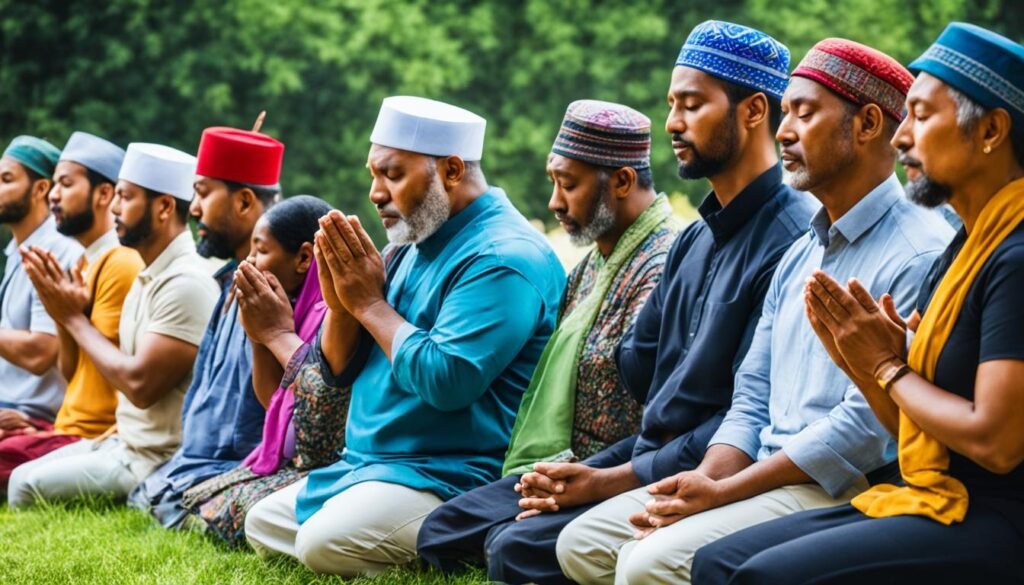
Overall, the cultural importance of prayer caps is deeply ingrained in the traditions, customs, and values of Muslim communities. The evolvement of prayer caps throughout history and their continued significance emphasizes the enduring cultural heritage and spiritual connection that they represent.
Significance of the Prayer Cap in Islam
In Islam, wearing a prayer cap holds great significance, going beyond its cultural importance. It is considered mustahabb (commendable) for Muslim men to cover their heads during prayer as a sign of respect and devotion to Allah. This practice is not obligatory but is seen as a way to demonstrate modesty and humility.
“Surely, Allah is modest and discreet, and He loves modesty and discretion.” – Prophet Muhammad (Narrated by Abu Sa’id Al-Khudri, Sahih Muslim)
The prayer cap serves as a gentle reminder of one’s connection to the faith and community. By wearing the cap, individuals express their reverence to Allah and their dedication to following Islamic teachings. It is a symbol of religious devotion and a way to honor the spiritual significance of prayer.
Modesty and Humility
The act of covering one’s head during prayer reflects the values of modesty and humility in Islam. It is a way to submit oneself fully to the commandments of Allah and to recognize that one is in the presence of the Divine. By wearing the prayer cap, Muslims acknowledge their dependence on Allah and their desire to approach Him with utmost humility.
Unity and Identity
Beyond its individual significance, the prayer cap also serves as a unifying symbol within the Muslim community. Muslims from different cultures and backgrounds wear the cap, creating a strong sense of shared identity and heritage. It is a visual representation of the universal bond that believers share, transcending borders and languages.
To Muslims, the prayer cap is more than just a piece of clothing; it is a spiritual adornment that reminds them of their commitment to their faith. By wearing the cap during prayer, Muslims honor the traditions and teachings of Islam, creating a sense of harmony and connection with the wider Muslim community.
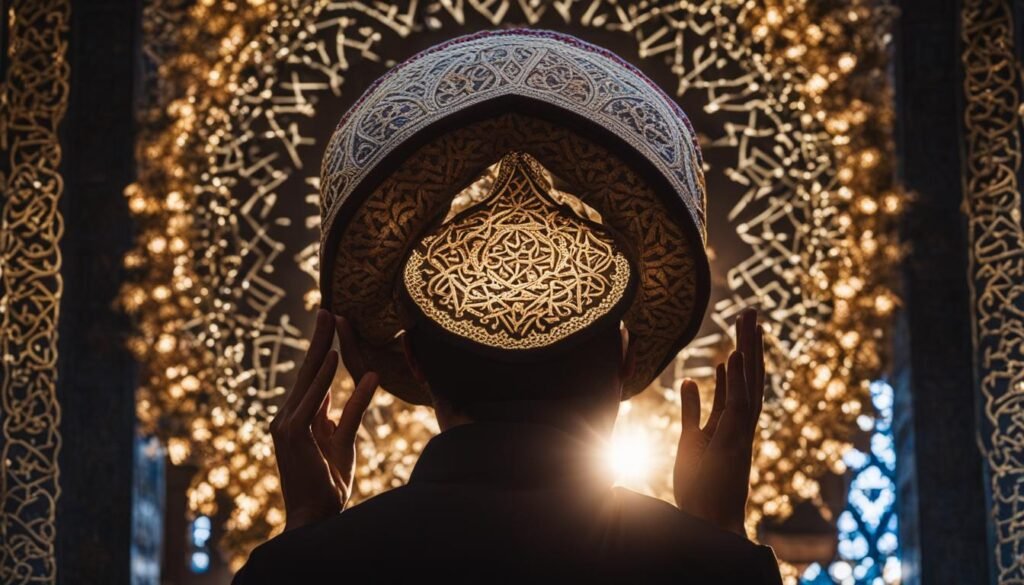
Through the simple act of wearing a prayer cap, Muslims express their dedication to following the path of Islam, their humility before Allah, and their sense of unity with fellow believers. It is a tangible representation of faith that carries profound meaning and purpose in the lives of Muslim men.
Prayer Caps Throughout History
Prayer caps have played a significant role in the history of Muslim clothing and attire. These caps have evolved in tandem with Islamic culture, adapting to various historical and regional influences. Worn by Muslims from diverse backgrounds, prayer caps have become an emblem of Islamic identity, embodying religious devotion, cultural heritage, and the values of modesty and respect.
Throughout the centuries, prayer caps have maintained their significance and have been cherished by generations of Muslims. They serve as a tangible expression of faith and a symbol of unity within the Muslim community. The historical attire of prayer caps reflects the enduring connection between individuals and their religious and cultural heritage.
“Prayer caps have been an integral part of Muslim attire throughout the ages, providing a visible sign of religious devotion and a unifying symbol for Muslims worldwide.”
Wearing a prayer cap is not just a fashion statement; it carries deep historical and cultural meaning. These caps have stood the test of time and witnessed the evolution of Islamic societies, adapting to the changing world while remaining rooted in tradition. They bear witness to the perseverance of faith and the enduring values that have shaped Muslim communities.
Prayer caps have become an indispensable part of Islamic tradition, with various styles and designs reflecting the diversity of Muslim cultures. They serve as a reminder of the rich tapestry of history, the struggles, achievements, and shared values that have shaped Muslim societies throughout the centuries.
To illustrate the historical journey of prayer caps, let’s take a closer look at some notable styles and their significance:
| Style | Region | Design | Significance |
|---|---|---|---|
| Kufi | Middle East | Simple, plain design | Traditional and widely worn |
| Keffiyeh | North Africa | Checkered pattern | Symbol of Arab identity and resistance |
| Topi | South Asia | Embroidered or embellished | Traditional attire and cultural pride |
“These distinct styles of prayer caps illustrate the cultural diversity within the Muslim community, while highlighting the unifying essence of Islamic faith.”
The rich history and prominence of prayer caps showcase their enduring importance in representing Muslim identity, religious conviction, and respect for cultural heritage. Their legacy endures as a testament to the connection between individuals and their faith, serving as a source of pride and inspiration for generations to come.
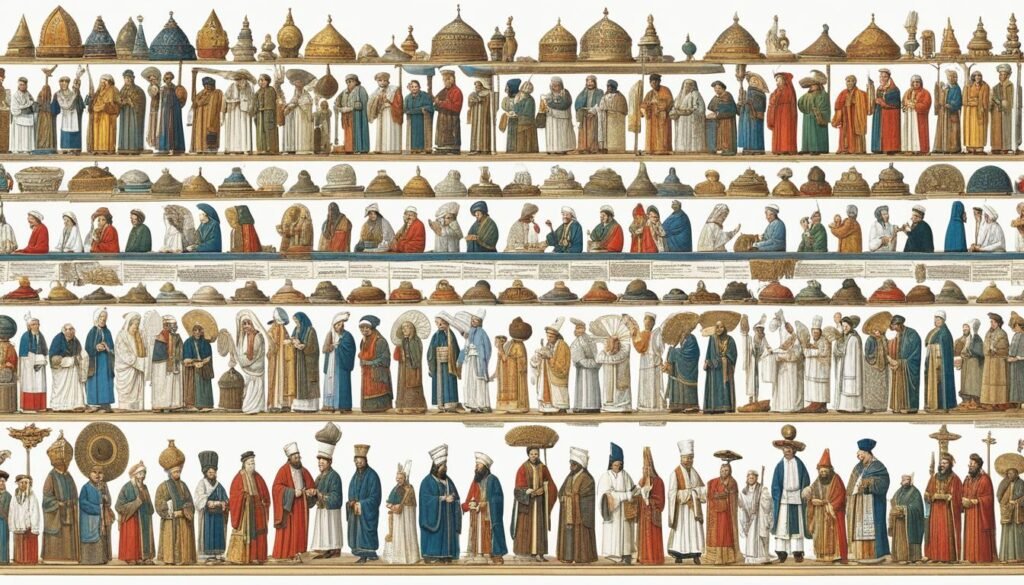
Different Styles of Prayer Caps
Prayer caps come in a variety of styles and designs, each influenced by different cultures and regions. Some caps are simple and plain, while others are intricately embroidered or adorned with patterns. Styles such as the kufi, keffiyeh, and topi are commonly seen across different Muslim communities. The choice of style and design may vary depending on personal preference, cultural traditions, and the occasion for which the cap is worn.
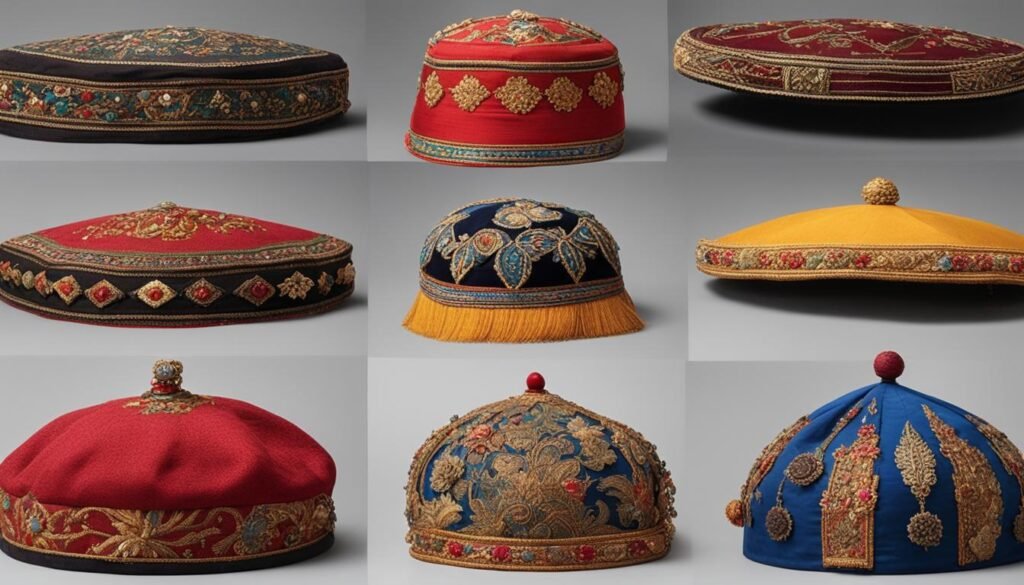
The historical attire of prayer caps showcases a wide range of designs and materials. From simplistic and understated caps to elaborate and ornate ones, the styles reflect the diverse influences and traditions of different Muslim communities. Let’s explore some of the popular styles of prayer caps:
| Style | Description |
|---|---|
| Kufi | A traditional style of prayer cap made from fabric or knitted material. It is often plain and fits closely to the head. |
| Keffiyeh | A square-shaped cap, typically made from a lightweight cotton or silk fabric. It is often worn folded into a triangle and secured with a headband. |
| Topi | A rounded cap with a slightly stiffened brim, usually made from fabric or leather. It may feature intricate embroidery or embellishments. |
| Taqiyah | A generic term for a prayer cap, often made from fabric and available in various styles and colors. |
These styles are not exhaustive, as prayer caps can vary greatly in design depending on regional and cultural influences. Whether one prefers a traditional and simple kufi or a more elaborate and decorative topi, the choice of prayer cap reflects personal taste and cultural heritage.
Prayer Caps as a Symbol of Religious Conversion
When a person converts to Islam, wearing a prayer cap can be a significant part of their process of embracing the religion. It is a visible sign of their religious conversion and a symbol of unity with the Muslim community. The prayer cap serves as a reminder of their commitment to their faith and their desire to follow the teachings of Islam. For converts, wearing the cap can also be a way to connect with their cultural heritage and express their identity as Muslims.
Throughout history, the prayer cap has been an essential element of Islamic attire, worn by Muslims worldwide. Its historical attire spans generations, functioning as a testament to the significance it holds in the hearts and minds of believers. This cultural icon not only signifies religious conversion but also embodies the cultural and traditional values associated with Islam.
The Significance of Prayer Caps
Prayer caps, also known as taqiyah or topi, have a deep and rich cultural importance within Muslim communities. They represent adherence to Islamic teachings and traditions and are worn as an expression of respect and humility towards Allah. These caps often carry a unique design and style that varies across different regions, reflecting the diverse cultural backgrounds of Muslim populations.
Wearing a prayer cap serves as a tangible connection to the Muslim heritage and a reminder of the commitment to religious faith. It is a symbol of unity among Muslims and promotes a sense of belonging within the community.
The Cultural Importance of Prayer Caps
Beyond its religious significance, the prayer cap plays a vital role in preserving cultural traditions and heritage. Its distinct styles and designs reflect the influences of specific regions, showcasing the diversity and beauty within the Muslim world. From the intricately embroidered caps of South Asia to the simple, elegant designs of the Middle East, prayer caps serve as a tangible representation of the unique cultural identities woven throughout the global Muslim community.
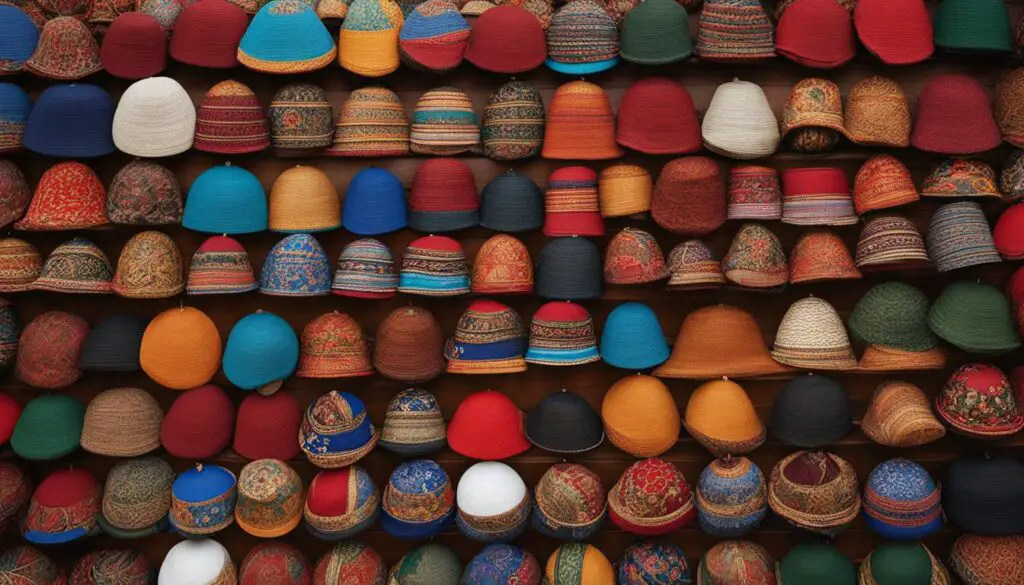
| Region | Styles of Prayer Caps |
|---|---|
| South Asia | Topi, Songkok |
| Middle East | Kufi, Ghutra |
| Africa | Kufi, Keffiyeh |
| Central Asia | Tubeteika, Chapan |
These diverse styles of prayer caps serve as a visual representation of the rich tapestry of Islamic culture. By wearing their traditional prayer caps, individuals can proudly display their cultural heritage and strengthen the cultural bonds within their communities.
The significance of prayer caps extends far beyond their physical presence. They embody the values of humility, unity, and respect associated with both religious conversion and cultural identity. The prayer cap is a visual symbol of devotion to Islam, reminding believers of their connection to their faith and their place within the global Muslim community.
Prayer Caps in Modern Times
Prayer caps have continued to maintain their significance in modern times, serving as an essential accessory for Muslim men in various contexts. They are not only worn during daily prayers, but also on special occasions and cultural events, representing a deep connection to religious and cultural traditions.
While the traditional styles of prayer caps have remained intact, they have also evolved to meet contemporary fashion trends. Modern materials, designs, and embellishments have been incorporated into prayer caps, allowing for a harmonious blend of tradition and style. This evolution has enabled prayer caps to remain relevant and appealing to the younger generation, while still honoring the historical and cultural significance they hold.
Prayer caps in modern times exemplify the evolvement of prayer caps throughout history. They embody the essence of traditional prayer caps while embracing the influence of modern fashion and materials. This adaptability has ensured that prayer caps continue to be a cherished symbol of faith and identity for Muslim men around the world.
Global Influence of the Prayer Cap
The prayer cap, also known as a taqiyah or topi, has transcended its origins and gained global recognition. Its presence can be seen in regions beyond those with a majority Muslim population. In countries like the United States and Britain, the prayer cap is commonly referred to as a kufi.
Worn by Muslim men, the prayer cap serves as a powerful symbol of religious and cultural identity. It reflects a deep commitment to upholding Islamic values and traditions. The cap’s global influence goes beyond religious significance, representing diversity and unity within the Muslim community.
Through the prayer cap, Muslims express a shared heritage and common values, irrespective of their geographic location. It serves as a unifying element that bridges cultural boundaries and fosters a sense of belonging among diverse Muslim communities spread across the globe.
The Influence of the Prayer Cap: A Symbol of Unity
The prayer cap’s global reach demonstrates the universal appeal of its cultural importance. Regardless of where it is worn, the cap serves as a testament to the rich history and traditions associated with Islam. As Muslims proudly wear their prayer caps, they not only uphold their own faith but also establish connections and foster understanding among people of different backgrounds and beliefs.
| Region | Prayer Cap Name |
|---|---|
| United States | Kufi |
| Britain | Kufi |
This table showcases how the prayer cap, known as a kufi, is recognized and embraced by Muslims residing in both the United States and Britain. Despite cultural variations, the prayer cap represents a shared sense of identity and serves as a unifying symbol within the global Muslim community.
Conclusion
The prayer cap holds a significant place in the history of Islamic culture and religion. It has evolved over the years, adapted to different styles and designs, yet never losing its deep-rooted meaning. The prayer cap is not just an accessory, but a symbol of religious devotion, cultural heritage, and a sense of identity for Muslims worldwide.
Throughout history, the prayer cap has been worn during prayer as well as on various cultural and special occasions. Its significance extends beyond its role as a religious accessory. The prayer cap serves as a reminder of faith, respect, and unity within Muslim communities, bridging diverse cultures and regions.
From its origins in the city of Kufa to its global influence, the prayer cap has stood the test of time. Its historical development reflects the ever-evolving Muslim world and its commitment to honoring traditions while embracing modernity.
As Muslims continue to wear the prayer cap, it remains a timeless symbol that transcends boundaries. It is a testament to the rich prayer cap history, the enduring significance of prayer caps, and the cultural importance they hold within the diverse world of Islam.
FAQ
What is a prayer cap?
A prayer cap, also known as taqiyah or topi, is a traditional cap worn by Muslim men for religious and cultural purposes.
Where did the prayer cap originate?
The prayer cap is believed to have originated in the city of Kufa in Iraq and is associated with the Islamic prophet Muhammad.
What is the significance of the prayer cap?
The prayer cap holds cultural and religious significance and serves as a symbol of Islamic identity and respect for Islamic traditions.
How has the prayer cap evolved over time?
The prayer cap has adapted to different cultural influences, resulting in various styles and designs across regions such as North Africa, East Africa, West Africa, South Asia, and the Middle East.
Why is wearing a prayer cap important in Islam?
Wearing a prayer cap is considered commendable in Islam as a sign of respect, modesty, and humility during prayers. It serves as a reminder of one’s connection to the faith and community.
How have prayer caps changed throughout history?
Prayer caps have been a prominent feature in Muslim clothing and attire, evolving alongside Islamic culture. They have become a symbol of Islamic identity and religious devotion.
What are the different styles of prayer caps?
Prayer caps come in a variety of styles influenced by different cultures and regions, including the kufi, keffiyeh, and topi, each with unique designs and meanings.
How do prayer caps relate to religious conversion?
For converts to Islam, wearing a prayer cap can be a significant part of embracing the religion. It symbolizes their commitment to the faith, unity with the Muslim community, and connection to their cultural heritage.
How are prayer caps relevant in modern times?
Prayer caps continue to be worn by Muslim men in various contexts, preserving traditional styles while incorporating modern fashion trends, blending tradition and style.
Does the prayer cap have a global influence?
Yes, the prayer cap extends beyond regions with a majority Muslim population, such as the United States and Britain, where it is worn as a symbol of religious and cultural identity, diversity, and unity within the Muslim community.


